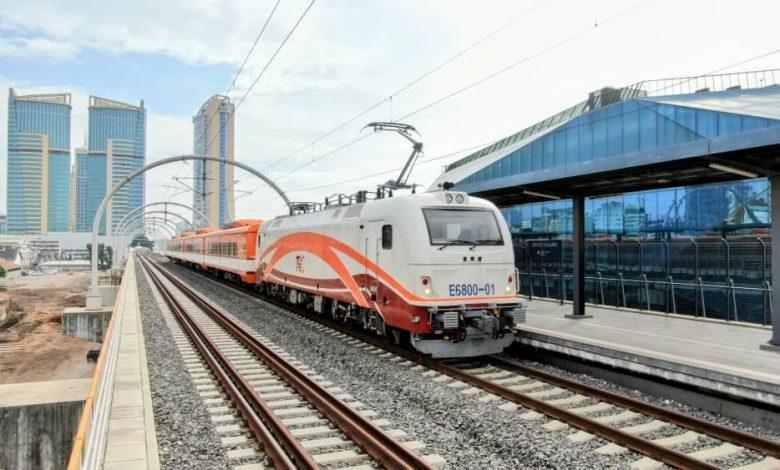Africa-Press – Tanzania. THE government has reaffirmed its commitment to building a modern, integrated railway system across Tanzania, with the Standard Gauge Railway (SGR) project at the heart of this transformation.
To realise the ambition, the government is actively seeking financing from development partners, including public-private partnerships (PPP), to complete key SGR routes, Finance Minister Dr Mwigulu Nchemba stated yesterday in the National Assembly when presenting the 2025/26 general budget.
Last month, Works Ministry tabled its 2025/26 budget, indicating an increase by 29 per cent compared to the 2024/25 budget.
For the next fiscal year, a total of 2.28tri/- will be channeled to the Ministry of Works, which represents an increase of 510.90bn/- from the current year.
This move aims to enhance the development of roads, bridges and public infrastructure while strengthening the capacity of local contractors and ensuring development centres around human dignity.
Dr Mwigulu stated yesterday that the planned expansions include the Kaliua– Mpanda–Karema line (321 km), the Mtwara–Mbamba Bay corridor with spurs to Liganga and Mchuchuma (1,000 km) and the Tanga– Arusha–Musoma route (1,028 km).
Urban commuter lines are also planned for Dar es Salaam (166 km) and Dodoma (107 km). These efforts build on major milestones already achieved.
By March 2025, the first two SGR segments, Dar es Salaam to Morogoro and Morogoro to Makutupora were operational, carrying over two million passengers and generating 60.25bn/- in revenue.
Travel time between Dar es Salaam and Dodoma has been reduced from nine hours to just three.
Construction is also progressing on other SGR sections: Mwanza–Isaka is 63.16 per cent complete with freight trials underway, while Makutupora–Tabora and Tabora– Isaka are at 14.53 and 6.65 per cent respectively.
Additional routes to Kigoma, Uvinza, Karema, Mbamba Bay, Musoma and key urban centres are also in the pipeline. These developments are part of a broader infrastructure agenda driving economic growth.
Since 2021, the government has spent over 1.58tri/- on roads, bridges and airports, alongside 1.68tri/- invested in railway infrastructure.
The road network under the Tanzania National Roads Agency (TANROADS) has expanded from 36,361.95 km in 2021 to 37,435.04 km by April 2025, boosting regional and cross-border connectivity.
Major bridge projects completed include Tanzanite in Dar es Salaam, Wami in Coast Region, Ruhuhu in Ruvuma, Mpwapwa in Dodoma, Msingi in Singida and the iconic Kigongo–Busisi Bridge linking Mwanza and Geita.
Construction of the Lower Mpiji, Simiyu and Pangani bridges is ongoing.
Urban mobility has also improved, with Phase II of the Dar es Salaam Bus Rapid Transit (BRT) system completed and implementation of Phases III, IV and V in progress.
Funding for rural and urban road networks under Tanzania Rural and Urban Roads Agency (TARURA) has increased more than sixfold, leading to an 81.16 per cent rise in gravel road coverage from 24,493 km in 2020 to 44,372.21 km in April 2025. Paved roads have also increased by 71.22 per cent, from 2,025 km to 3,467.30 km.
The national road network now stands at 144,429.77 km, up from 108,946.18 km in 2020.
Air transport infrastructure has also seen major improvements, with airports built or rehabilitated in Songwe, Mtwara, Songea, Iringa, Geita, Msalato, Kigoma, Tabora, Sumbawanga, Shinyanga and Musoma.
Air Tanzania Company Limited (ATCL) has expanded its fleet from nine to 16 aircraft, including six passenger planes and one cargo aircraft. Port development remains a priority, especially at the Port of Dar es Salaam.
Joint investments between the government and the private sector have enhanced port efficiency, reducing operational costs from 975bn/- to 685.2bn/- and enabling the construction of a shared oil reception tank farm.
Customs revenue collected at the port reached 8.26tri/- between July 2024 and February 2025, an increase of 1.18tri/- from the same period the previous year.
For More News And Analysis About Tanzania Follow Africa-Press







